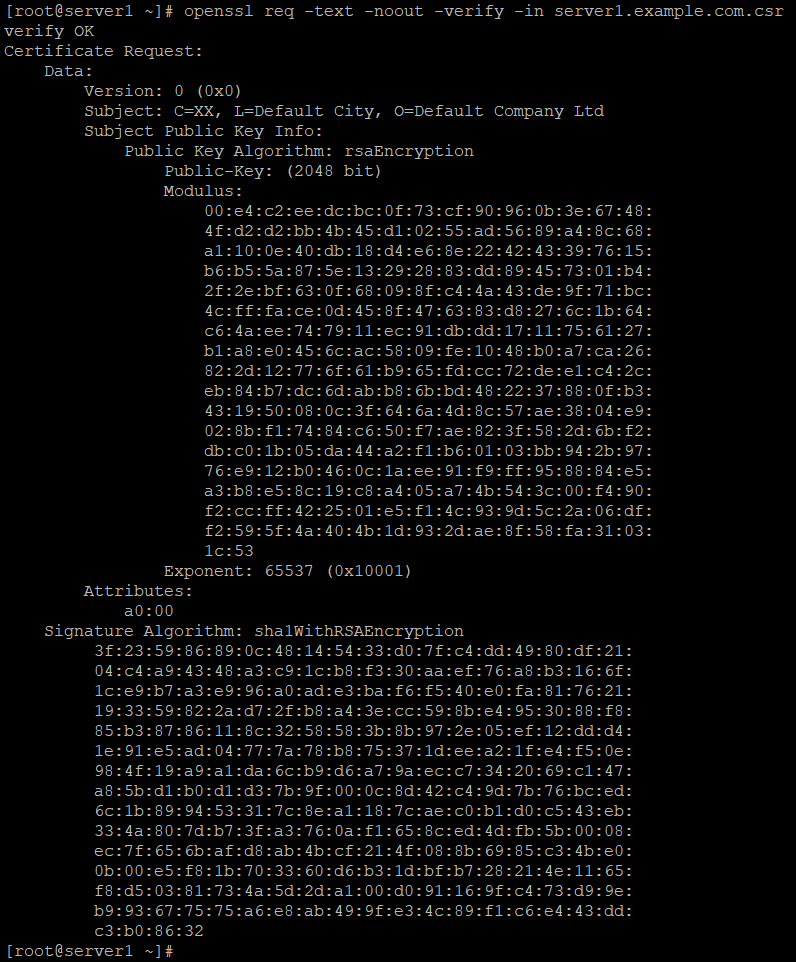

O Time Stamp requests, generation and verification O Handling of S/MIME signed or encrypted mail O Creation of X.509 certificates, CSRs and CRLs O Creation and management of private keys, public keys and parameters The openssl program is a command line tool for using the various cryptography functions of Transport Layer Security (TLS v1) network protocols and related cryptography standards OpenSSL is a cryptography toolkit implementing the Secure Sockets Layer (SSL v2/v3) and List-cipher-algorithms | list-message-digest-algorithms | list-public-key-algorithms]

Openssl [ list-standard-commands | list-message-digest-commands | list-cipher-commands |
OPENSSL COMMAND CODE
Since the certificate will expire within the next 20 weeks, we get a return status code of 1. Let’s now check if the same certificate will expire in the next 20 weeks: $ openssl x509 -in googlecert.pem -noout -checkend 12096000 The command above returns a status code of 0 because the certificate is not expiring in the next 60 seconds. Furthermore, the command will return a message indicating the expiry status of the certificate.įor example, to determine if a certificate is expiring within the next 60 seconds: $ openssl x509 -in googlecert.pem -noout -checkend 60 The command returns a 0 status code if the certificate given is not expiring within the next n seconds. If it is, the command will result in a 1 return status code. The command above will check if the certificate is expiring in the next n seconds. Generally: $ openssl x509 -in -noout -checkend n The option takes an additional argument n which has a unit of seconds. Using the -checkend option of the x509 subcommand, we can quickly check if a certificate is about to expire.
OPENSSL COMMAND FULL
The man page for the openssl command provides a full list of formatting arguments. OrganizationName=Google Trust Services LLC For instance, we could combine the lname and sep_multiline operators: $ openssl x509 -in googlecert.pem -noout -issuer -nameopt lname -nameopt sep_multiline Issuer=countryName=US, organizationName=Google Trust Services LLC, commonName=GTS CA 1C3įinally, the -nameopt option can be specified multiple time to combine different operators’ behavior. We could also display the long field name instead of the abbreviation by passing in the lname operator to -nameopt: $ openssl x509 -in googlecert.pem -noout -issuer -nameopt lname Extracting Specific Information from the Certificateįor output such as issuer and subject, we can additionally specify the display format using -nameopt option.įor example, we can separate the issuer information into multiple lines using -nameopt option followed by sep_multiline operator: $ openssl x509 -in googlecert.pem -noout -issuer -nameopt sep_multiline Without the -noout option, the command will by default return the base64 encoded certificate.įinally, we specify the -text option to print the entire certificate in plain text form. Then, the -noout option prevents any output from the command. Issuer: C = US, O = Google Trust Services LLC, CN = GTS CA 1C3įirstly, the -in option specify the certificate file to be decoded. Signature Algorithm: sha256WithRSAEncryption To decode the entire certificate into plain text, we use the x509 command with the -text option: $ openssl x509 -in googlecert.pem -noout -textĢ4:4e:52:d9:6b:55:1f:96:0a:00:00:00:00:f2:ba:f4 MQswCQYDVQQGEwJVUzEiMCAGA1UEChMZR29vZ2xlIFRydXN0IFNlcnZpY2VzIExM MIINUDCCDDigAwIBAgIQJE5S2WtVH5YKAAAAAPK69DANBgkqhkiG9w0BAQsFADBG In other words, this certificate would also be valid for the *., *., and so on. For example, the X509v3 Subject Alternative Name field defines other domains that are authenticating using the same certificates. In the X509v3 extensions field, we can find several extended properties that are on version 3 of the X.509 certificate standard. Beneath the same field, the certificate also defines the algorithm type of the public key as well as the necessary parameters. Furthermore, the Subject Public Key Info field specifies the public key for this certificate. This is a wildcard common name that allows all the subdomains of to identify themselves using the same certificate.

On the Subject field, we can see that this certificate has a common name of *. Particularly, a certificate is only valid during the period defined by the Not Before and Not After. Next, the Validity field defines the period during which a certificate is effective. Additionally, the issuer has a common name of GTS CA 1C3. For this particular certificate, the issuer is under the Google Trust Services LLC organization that’s residing in the US. The issuer of the certificate is defined under the field Issuer. It’s a value given by the issuer when it signs the certificate.
OPENSSL COMMAND SERIAL
Firstly, every certificate contains a Serial Number.


 0 kommentar(er)
0 kommentar(er)
